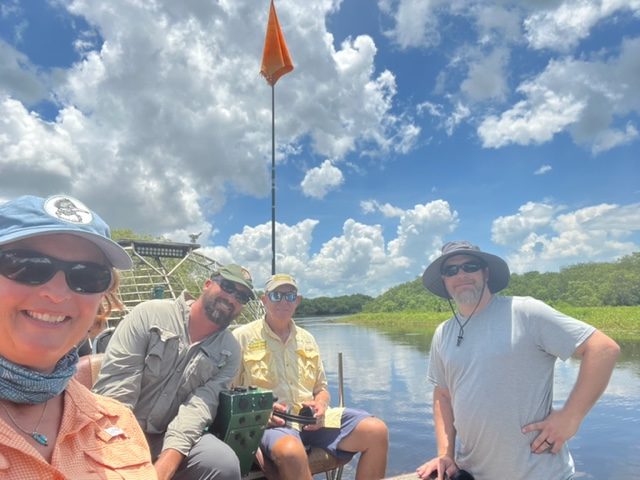Written by Lisa Rinaman, St. Johns Riverkeeper
For more than four years, we have sounded the alarm regarding the environmental and human health risks of the land disposal of sewage sludge (aka biosolids) and the inequity of the state-sanctioned export of South Florida’s human waste to the St. Johns River Watershed.
Florida has been facing a mounting water quality crisis for decades with utilities favoring cheap land disposal of sewage sludge, more pleasantly known as, “biosolids.” In the early 2000’s, this disposal method of the black, slimy sludge byproduct of wastewater treatment resulted in the runoff of high concentrations of phosphorous that continue to fuel blue green algae blooms in Lake Okeechobee. In an effort to protect Lake O, the 2007 Florida Legislature approved restrictions resulting in the relocation of nearly 100,000 tons of South Florida’s sewage sludge north to the St. Johns River watershed. Since South Florida began trucking their sewage sludge north, the St. Johns River has been plagued with frequent toxic blue-green algae blooms fueled by phosphorous runoff that has spiked dramatically in recent years.
Public pressure and the approval of slightly more protective regulations that go into effect in mid-2023 have resulted in a reduction in the volume of waste trucked from South Florida to approximately 50,000 tons annually according to the St. Johns River Water Management District. While we are pleased to see a significant reduction in sewage sludge flowing north from South Florida, we should not have to bear the consequences of sewage and pollution from other regions.
Now, we know that sewage sludge also presents an additional, more toxic threat to human health beyond harmful algae outbreaks.
In 2020, FDEP identified biosolids as a potential source of Per- and Polyfluoroalkyl Substances (PFAS), a class of chemicals known as “forever chemicals” because they don’t naturally break down in the environment. These compounds have historically been used in products like fire suppressant foams, stain-resistant and waterproof fabrics, and non-stick cookware. They are highly resistant to degradation and are highly toxic to humans and wildlife.
PFAS chemicals from sewage sludge spread on the land have been found to contaminate surface waters, groundwater, and food and feed crops, ending up in livestock and our bloodstream.
Studies have linked PFAS to a variety of health effects including high blood pressure, cancer, liver disease, kidney disease, and harm to reproductive and immune systems.
While numerous states have found elevated levels of PFAS in biosolids, Florida does not currently test for “forever chemicals” in sewage sludge despite knowing the potential risks.
We deserve much better than this.
As a result, St. Johns RIVERKEEPER, and our partner Public Trust for Conservation, continue to demand equal protections for the St. Johns River and call for an end to the dumping of South Florida sewage sludge in our watershed.
We are also urging Congress to prioritize our health by swiftly acting to regulate PFAS and hold polluters accountable.
We will update you soon with more information about how you can help us stop the land disposal of sewage sludge and protect our waters and our health from PFAS contamination.
